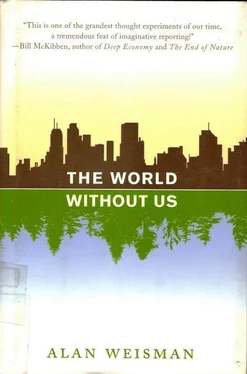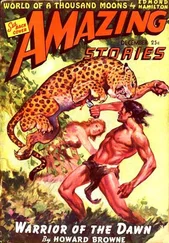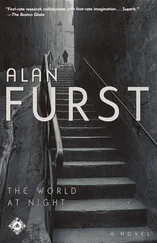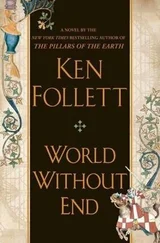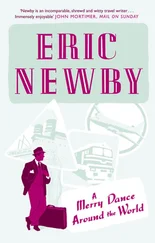Thompson’s team realized that slow mechanical action—waves and tides that grind against shorelines, turning rocks into beaches—were now doing the same to plastics. The largest, most conspicuous items bobbing in the surf were slowly getting smaller. At the same time, there was no sign that any of the plastic was biodegrading, even when reduced to tiny fragments.
“We imagined it was being ground down smaller and smaller, into a kind of powder. And we realized that smaller and smaller could lead to bigger and bigger problems.”
He knew the terrible tales of sea otters choking on polyethylene rings from beer six-packs; of swans and gulls strangled by nylon nets and fishing lines; of a green sea turtle in Hawaii dead with a pocket comb, a foot of nylon rope, and a toy truck wheel lodged in its gut. His personal worst was a study on fulmar carcasses washed ashore on North Sea coastlines. Ninety-five percent had plastic in their stomachs—an average of 44 pieces per bird. A proportional amount in a human being would weigh nearly five pounds.
There was no way of knowing if the plastic had killed them, although it was a safe bet that, in many, chunks of indigestible plastic had blocked their intestines. Thompson reasoned that if larger plastic pieces were breaking down into smaller particles, smaller organisms would likely be consuming them. He devised an aquarium experiment, using bottom-feeding lugworms that live on organic sediments, barnacles that filter organic matter suspended in water, and sand fleas that eat beach detritus. In the experiment, plastic particles and fibers were provided in proportionately bite-size quantities. Each creature promptly ingested them.
When the particles lodged in their intestines, the resulting constipation was terminal. If they were small enough, they passed through the invertebrates’ digestive tracts and emerged, seemingly harmlessly, out the other end. Did that mean that plastics were so stable that they weren’t toxic? At what point would they start to naturally break down—and when they did, would they release some fearful chemicals that would endanger organisms sometime far in the future?
Richard Thompson didn’t know. Nobody did, because plastics haven’t been around long enough for us to know how long they’ll last or what happens to them. His team had identified nine different kinds in the sea so far, varieties of acrylic, nylon, polyester, polyethylene, polypropylene, and polyvinyl chloride. All he knew was that soon everything alive would be eating them.
“When they get as small as powder, even zooplankton will swallow them.”
Two sources of tiny plastic particles hadn’t before occurred to Thompson. Plastic bags clog everything from sewer drains to the gullets of sea turtles who mistake them for jellyfish. Increasingly, purportedly biodegradable versions were available. Thompson’s team tried them. Most turned out to be just a mixture of cellulose and polymers. After the cellulose starch broke down, thousands of clear, nearly invisible plastic particles remained.
Some bags were advertised to degrade in compost piles as heat generated by decaying organic garbage rises past 100°F. “Maybe they do. But that doesn’t happen on a beach, or in salt water.” He’d learned that after they tied plastic produce bags to moorings in Plymouth Harbor. “A year later you could still carry groceries in them.”
Even more exasperating was what his Ph.D. student Mark Browne discovered while shopping in a pharmacy. Browne pulls open the top drawer of a laboratory cabinet. Inside is a feminine cornucopia of beauty aids: shower massage creams, body scrubs, and hand cleaners. Several are by boutique labels: Neova Body Smoother, SkinCeuticals Body Polish, and DDF Strawberry Almond Body Polish. Others are international name brands: Pond’s Fresh Start, a tube of Colgate Icy Blast toothpaste, Neutrogena, Clearasil. Some are available in the United States, others only in the United Kingdom. But all have one thing in common.
“Exfoliants: little granules that massage you as you bathe.” He selects a peach-colored tube of St. Ives Apricot Scrub; its label reads, 100% natural exfoliants . “This stuff is okay. The granules are actually chunks of ground-up jojoba seeds and walnut shells.” Other natural brands use grape seeds, apricot hulls, coarse sugar, or sea salt. “The rest of them,” he says, with a sweep of his hand, “have all gone to plastic.”
On each, listed among the ingredients are “micro-fine polyethylene granules,” or “polyethylene micro-spheres,” or “polyethylene beads.” Or just polyethylene.
“Can you believe it?” Richard Thompson demands of no one in particular, loud enough that faces bent over microscopes rise to look at him. “They’re selling plastic meant to go right down the drain, into the sewers, into the rivers, right into the ocean. Blite-size pieces of plastic to be swallowed by little sea creatures.”
Plastic bits are also increasingly used to scour paint from boats and aircraft. Thompson shudders. “One wonders where plastic beads laden with paint are disposed. It would be difficult to contain them on a windy day. But even if they’re contained, there’s no filter in any sewage works for material that small. It’s inevitable. They end up in the environment.”
He peers into Browne’s microscope at a sample from Finland. A lone green fiber, probably from a plant, lies across three bright blue threads that probably aren’t. He perches on the countertop, hooking his hiking boots around a lab stool. “Think of it this way. Suppose all human activity ceased tomorrow, and suddenly there’s no one to produce plastic anymore. Just from what’s already present, given how we see it fragmenting, organisms will be dealing with this stuff indefinitely. Thousands of years, possibly. Or more.”

IN ONE SENSE, plastics have been around for millions of years. Plastics are polymers: simple molecular configurations of carbon and hydrogen atoms that link together repeatedly to form chains. Spiders have been spinning polymer fibers called silk since before the Carboniferous Age, whereupon trees appeared and started making cellulose and lignin, also natural polymers. Cotton and rubber are polymers, and we make the stuff ourselves, too, in the form of collagen that comprises, among other things, our fingernails.
Another natural, moldable polymer that closely fits our idea of plastics is the secretion from an Asian scale beetle that we know as shellac. It was the search for an artificial shellac substitute that one day led chemist Leo Baekeland to mix tarry carbolic acid—phenol—with formaldehyde in his garage in Yonkers, New York. Until then, shellac was the only coating available for electric wires and connections. The moldable result became Bakelite. Baekeland became very wealthy, and the world became a very different place.
Chemists were soon busy cracking long hydrocarbon chain molecules of crude petroleum into smaller ones, and mixing these fractionates to see what variations on Baekeland’s first man-made plastic they could produce. Adding chlorine yielded a strong, hardy polymer unlike anything in nature, known today as PVC. Blowing gas into another polymer as it formed created tough, linked bubbles called polystyrene, often known by the brand name Styrofoam. And the continual quest for an artificial silk led to nylon. Sheer nylon stockings revolutionized the apparel industry, and helped to drive acceptance of plastic as a defining achievement of modern life. The intercession of World War II, which diverted most nylon and plastic to the war effort, only made people desire them more.
After 1945, a torrent of products the world had never seen roared into general consumption: acrylic textiles, Plexiglass, polyethylene bottles, polypropylene containers, and “foam rubber” polyurethane toys. Most world-changing of all was transparent packaging, including self-clinging wraps of polyvinyl chloride and polyethylene, which let us see the foods wrapped inside them and kept them preserved longer than ever before.
Читать дальше
